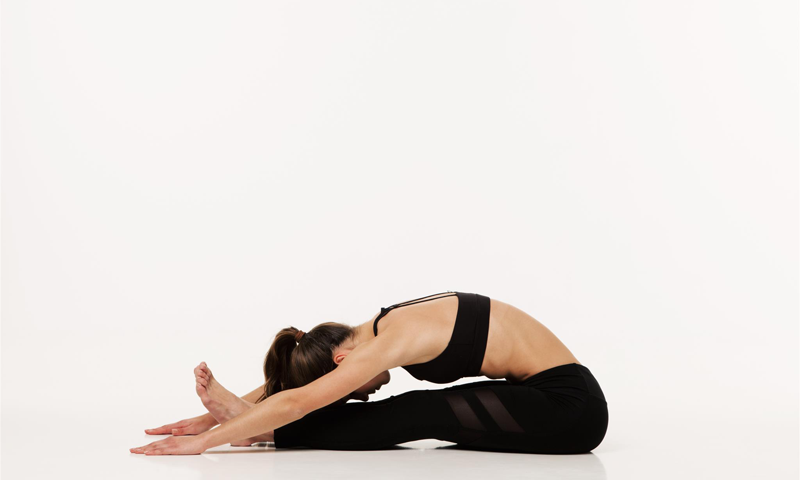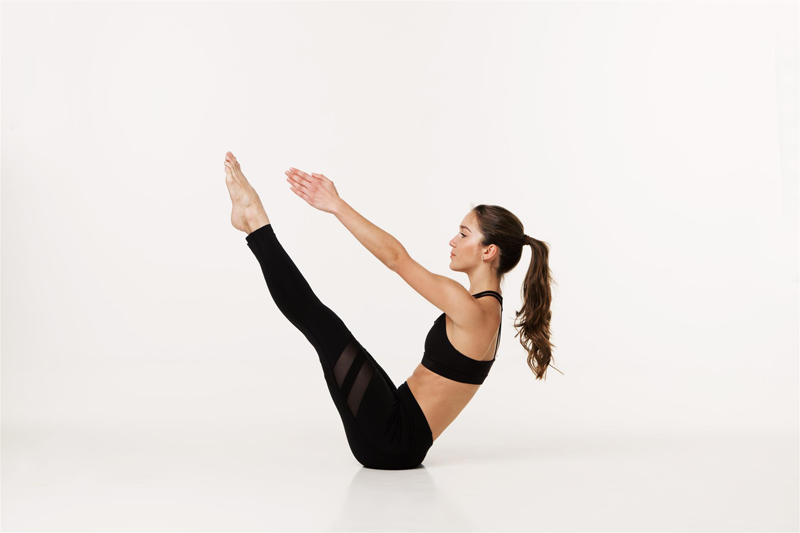
Yoga to Improve Blood Circulation
April 27, 2018
Can Yoga Help with Depression?
May 11, 2018What is Ashtanga Yoga?

Ashtanga yoga is a dynamic yoga style focused on regulated breathing and asana sequences. Today, most popular yoga styles are based on the principles of Ashtanga. With studios all over the world, millions of people reap the benefits of the style each day. The adaptable discipline is suitable for all abilities – even children! As long as your little ones have some suitable children’s yoga clothes, they can practice alongside you. In this article, we explore Ashtanga Yoga in more detail and discuss why the traditional style is so popular.
Ashtanga Yoga Basics
Traditional Ashtanga comprises of set pranayamas and asanas. For best results, each of these should be practiced in the correct sequential order. When used this way, each exercise ensures the body is ready for the next. By the end of the sequence, the asanas will have targeted every area of the body. Practitioners are encouraged to use a deep breathing exercise known as ‘Ujjayi’ alongside the asanas. This helps yogis to regain control of their senses and to form a deeper understanding of their inner-self. When practiced regularly, the style is believed to create a happier and healthier lifestyle by increasing steadiness of the body and mind.
From Sanskrit, the word ‘Ashtanga’ translates to ‘eight limbs’. The discipline is split into eight different areas: Yama (meaning abstinences), Niyama (meaning observances), Asana (meaning postures), Pranayama (meaning breath control), Pratyahara (meaning sense withdrawal), Dharana (meaning concentration), Dhyana (meaning meditation), and Samadhi (meaning contemplation). While all areas are important to the style, practitioners should start with Pranayama before moving onto anything else. Once breathing control has been established, the remaining areas will become easier to develop.
The term ‘Vinyasa’ is often used within Ashtanga Yoga. When translated from Sanskrit, this term means ‘breath synchronized movement’. This reminds yogis that breathing control should be at the heart of the practice, linking each asana onto the next. When breathing and movement and synchronized, the body produces an internal heat. Working to purify the blood, this heat is beneficial to the physical body. Addi-tionally, the heat is believed to rid the body of toxins and leave positive minerals in their place. The sweat produced during Ashtanga practice is often massaged back into the skin. Whilst sweating rids the body of toxins, natural hormones are also released in the process. Massaging the sweat back into the skin allows the body to soak up these beneficial hormones.
The History of Ashtanga Yoga
Ashtanga Yoga was first described in an ancient text named the ‘Yoga Korunta’. The passage was written by yoga guru, Vamana Rishi. Over the years, the religious text was passed down from one guru to the next, allowing many generations to soak up the knowledge. Even all those years ago, the focus of Ashtanga remained the same; practitioners were encouraged to unite their breathing with movement to produce a unique style of yoga. Practicing the style regularly allows practitioners to rid their mind of emotional afflictions and focus purely on self-awareness. When practiced for longer durations, the heat produced will endorse the body with various health benefits. Years ago, Ashtanga was regarded as a unique and contemporary practice; however, the style now forms the basis of most yoga styles in the West.

Though back then Ashtanga Yoga was seen as being a unique and contemporary practice, the style now forms the basis of most yoga practices in the West. Traditional Ashtanga is known as the ‘Mysore-Style’. Though each asana should be performed in a set order, yogis should practice the style at their own rate. Beginners may find it beneficial to attend a local class. There, an experienced instructor will be able to ensure each posture is performed correctly. This will minimize the risk of injury and also make sure students reap the most benefit the session. During a beginners Ashtanga class, new postures will only be taught to those with enough strength and stamina. Once yogis have learned to regulate their breathing, both strength and stamina will come naturally.
Benefits of Ashtanga
Like all yoga styles, Ashtanga brings with it a range of benefits. While some of these may be immediate, others require regular practice. This means that practitioners of all abilities can reap the benefits of the style.
Many yogis use Ashtanga to build up physical strength. Through a series of asanas, students can strengthen their muscles with each session. Yogis that choose to practice Ashtanga at a local class will learn how to build the ideal balance of strength and flexibility. This will not only make each asana easy to perform, but students will also be able to gain maximum benefit from each posture. Additionally, Ashtanga instructors advise students on the best way to practice. This prevents yogis from moving their muscles incorrectly. Over time, incorrect muscle movement can cause a series of health issues. Notable issues include strains, sprains, and muscular discomfort. Sometimes, we used our muscles incorrectly during day-to-day life. As muscle memory is deeply rooted, it can be difficult to get out of these habits once we begin. Through regular Ashtanga practice, yogis can confront any bad habits and reprogram their physical alignment.
In addition to benefitting our physical health, Ashtanga Yoga can benefit our emotional health, too. Emo-tionally, the practice encourages yogis to become more open to others and themselves. Additionally, regular Ashtanga practice can release emotional trauma stored within the muscles. This allows traumatic experiences to be emotionally expelled from the body. The breathing exercises used within Ashtanga have a range of benefits, too. When used correctly, regulated breathing can be used to combat stress and anxiety in daily life.
In Summary
When the style is practiced regularly, Ashtanga yogis can enjoy a well-functioning body and mind. While there are eight areas of Ashtanga Yoga, those that practice just a few areas will still see the benefits. During a new class, it’s important to be comfortable so you can concentrate on the postures. With this in mind, it may be a good idea to pick up a comfortable yoga hoodie to wear during the session.

